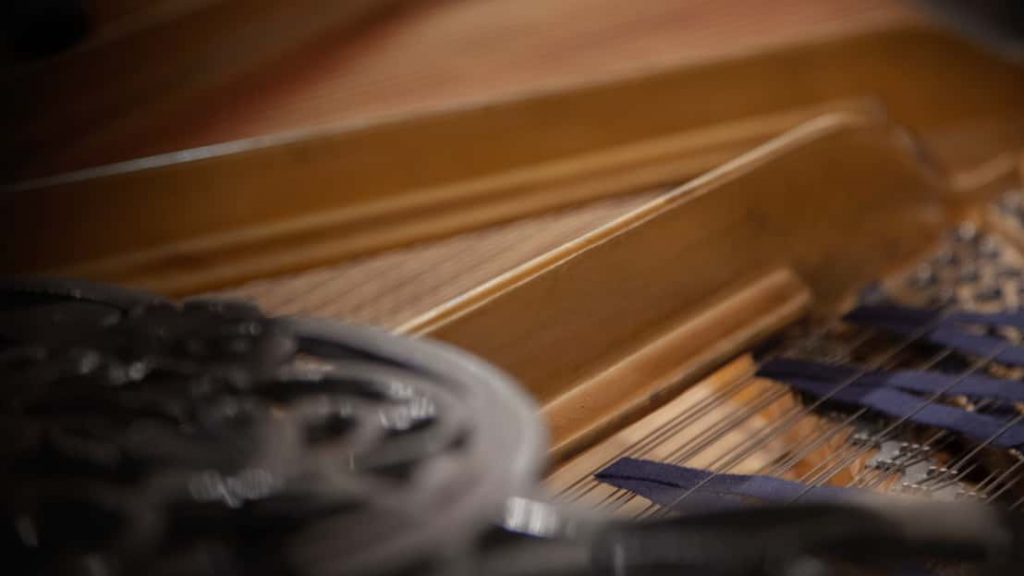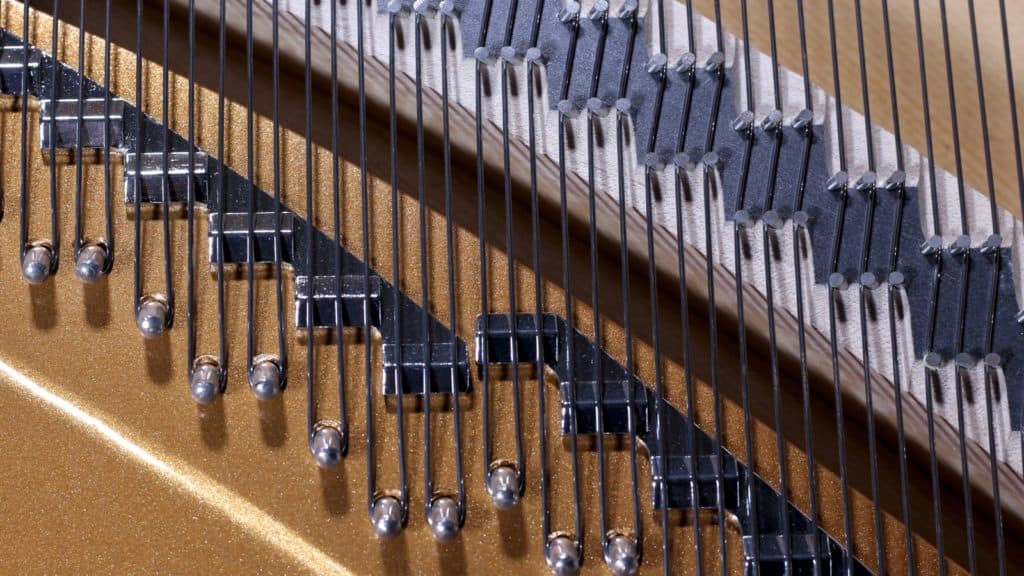Aliquot strings are additional (auxiliary) strings that enrich the overtones of an instrument. Rather than being played directly, they enhance the tone solely through string resonance. On grand and upright pianos, aliquot stringing adds brilliance and sustain to the upper octaves.
The Blüthner Aliquot System
At the end of the 19th century, Blüthner developed the aliquot system, which is still used in grand pianos today. In the aliquot system, a fourth string is added to the other three strings of the upper three octaves. The aliquot string, however, is positioned slightly above so that it cannot be struck by the hammer. When the three conventional strings of a note are struck, the aliquot string vibrates only by resonance.
In the Blüthner system, the aliquot strings transmit vibrations to the soundboard via the bridge. Because they are so active when played, their vibrations require dampers when the keys are released.
Aliquot Strings and Duplex Scaling
Piano makers also use so-called duplex scaling to enrich the sound of a piano. However, this method is not equivalent to the aliquot stringing system. While duplex scaling also produces overtones to enrich the piano’s sound, unlike aliquot strings, duplex strings are not independent, individually tuned strings. Instead, duplex scaling utilizes the primary strings – more specifically, the section between the back bridge pin and the hitch pin. This part of the string is outside the actively struck part of the string.
Sympathetic Resonance
Any freely vibrating, undamped string on the piano can resonate when other, nearby strings are sounded. This happens depending on the fundamental or overtone frequencies, which influence the sound of pianos and grand pianos in complex ways. The aliquot stringing system also plays a role here. So both sympathetic resonance and aliquot resonance enrich the sound of the piano with a complex mix of overtones.


